
- 192 pages
- English
- ePUB (mobile friendly)
- Available on iOS & Android
eBook - ePub
About this book
Have you ever wanted to hone your cartooning skills? The Cartoonist's Bible has unique and completely practical tips on how to make that happen.
Not only will you learn how to draw cartoons in many formats including up-to-date advice on CGI (computer generated images) and Manga comics, but you will also learn easy, foolproof methods of how to always be able to think up new humorous ideas for your cartoons—and how to give yourself the best chance of selling your work and seeing it published.
- Create great cartoons in a wide range of styles and media, from comic-book line art to digital manga
- Learn how to exaggerate and distort your characters to great comic effect
- Render funny expressions and body language
- Add backgrounds, lettering, and speech balloons.
In The Cartoonist's Bible, there is an extremely useful and comprehensive Expressions File that means you will never struggle to draw just the right look on your cartoon characters. Also included is a valuable Cartoon Resources file to signpost you on to further information about all aspects of cartooning.
Frequently asked questions
Yes, you can cancel anytime from the Subscription tab in your account settings on the Perlego website. Your subscription will stay active until the end of your current billing period. Learn how to cancel your subscription.
At the moment all of our mobile-responsive ePub books are available to download via the app. Most of our PDFs are also available to download and we're working on making the final remaining ones downloadable now. Learn more here.
Perlego offers two plans: Essential and Complete
- Essential is ideal for learners and professionals who enjoy exploring a wide range of subjects. Access the Essential Library with 800,000+ trusted titles and best-sellers across business, personal growth, and the humanities. Includes unlimited reading time and Standard Read Aloud voice.
- Complete: Perfect for advanced learners and researchers needing full, unrestricted access. Unlock 1.4M+ books across hundreds of subjects, including academic and specialized titles. The Complete Plan also includes advanced features like Premium Read Aloud and Research Assistant.
We are an online textbook subscription service, where you can get access to an entire online library for less than the price of a single book per month. With over 1 million books across 1000+ topics, we’ve got you covered! Learn more here.
Look out for the read-aloud symbol on your next book to see if you can listen to it. The read-aloud tool reads text aloud for you, highlighting the text as it is being read. You can pause it, speed it up and slow it down. Learn more here.
Yes! You can use the Perlego app on both iOS or Android devices to read anytime, anywhere — even offline. Perfect for commutes or when you’re on the go.
Please note we cannot support devices running on iOS 13 and Android 7 or earlier. Learn more about using the app.
Please note we cannot support devices running on iOS 13 and Android 7 or earlier. Learn more about using the app.
Yes, you can access Cartoonist's Bible by Franklin Bishop in PDF and/or ePUB format, as well as other popular books in Art & Art Techniques. We have over one million books available in our catalogue for you to explore.
Information
Topic
ArtSubtopic
Art TechniquesCHAPTER ONE
TOOLS AND MATERIALS

GETTING TOOLED UP
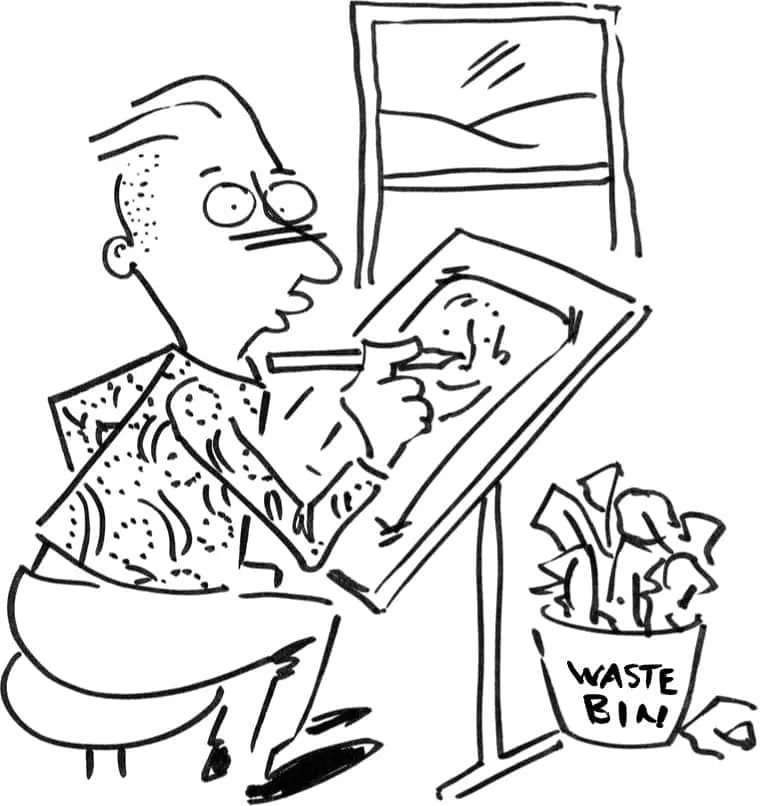
The great advantage of being a cartoonist is that you do not need to spend a fortune on expensive equipment or materials. Ultimately all a cartoonist needs is something to draw with and some paper to draw on.
Of course, to be able to draw with consistency you will need a good supply of pencils, pens, and some decent paper. As you gain new drawing skills you will decide on just the right drawing implements that suit your style and your favorite type of paper. Cartoons can be produced in all kinds of media, techniques, and styles, but it is a good idea to start with black-and-white drawings. As you gain confidence, you can move on to explore color and a wider range of more advanced and sophisticated drawing tools, including the many possibilities of computer-generated cartoons (see Using computers, page 30).
Scalpels
Scalpels are invaluable for trimming your artwork and much more accurate than using scissors. Scalpel handles and packs of blades are easily available from art materials stores.
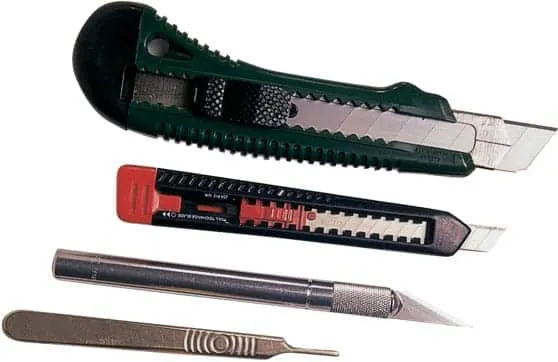
Light box
A light box is simply a lit screen that enables you to see through opaque paper and original artwork so that you can trace and amend the drawing on a new sheet of paper. These are not essential and can be expensive but they are useful if you intend to be a professional cartoonist. Sizes range from A4 tabletop boxes upward.
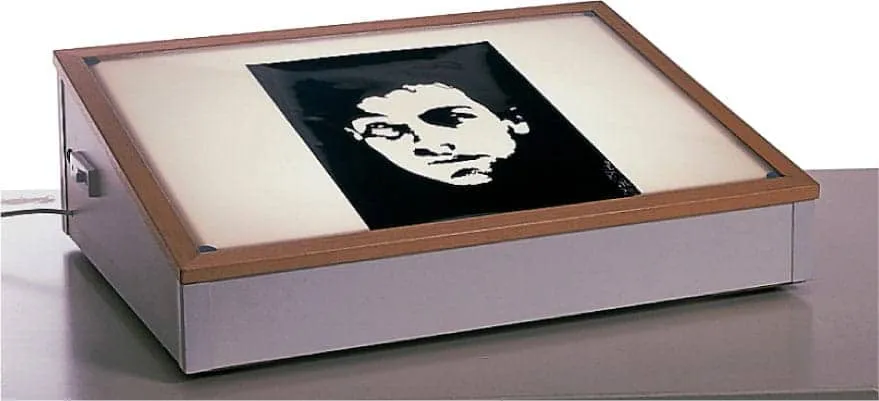
Drawing board
These can vary from a simple piece of plywood to a purpose-made, freestanding drawing board complete with an attached parallel motion device. If you don’t have the space for a large freestanding drawing board, a fold-flat tabletop drawing board can be particularly useful (a good size to start with is A3). To complement your drawing board you will also find it useful to have a set square since this, together with a T-square, will allow you to set up your artwork accurately. Throw in a ruler too and your drawing board will be ideal for efficient working.
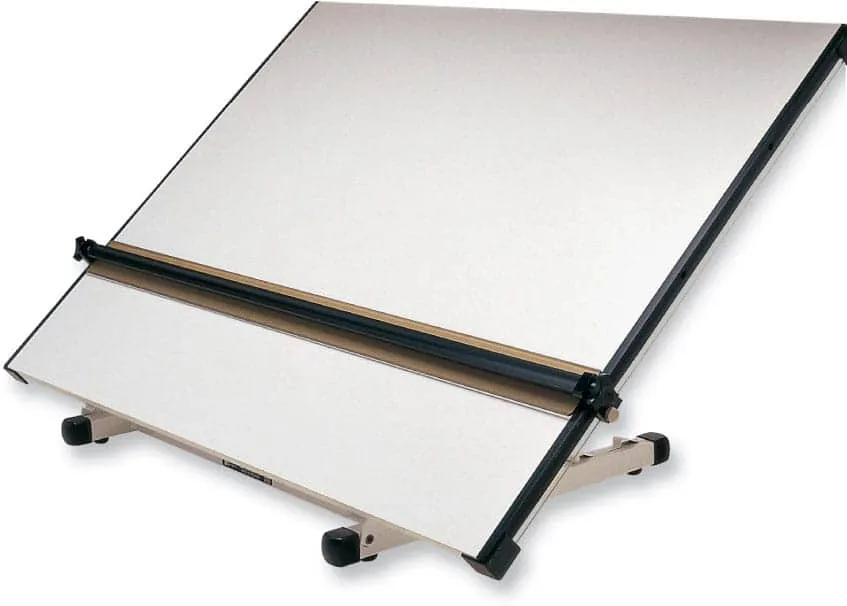
Cutting mat
To avoid leaving nasty deep scratches over your tabletops or drawing board a cutting mat is another desirable item to have—it is simply a plastic mat that stops the blade cutting through to the surface below when you are trimming paper or card to size.
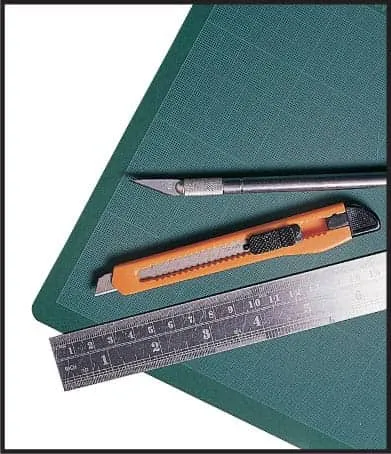
Miscellaneous items
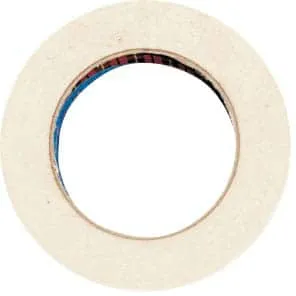
Drafting tape is low-tack and is great for sticking down your paper onto the board while still allowing you to remove it without damaging or tearing the sheet. A dry glue stick is incredibly useful for a cartoonist especially if you are putting a patch of paper over your original artwork with a correction on it. Process White is an item used by professional cartoonists. It is a thick, opaque pure white type of paint that is used to cover up mistakes on original artwork and allows you to draw over it.
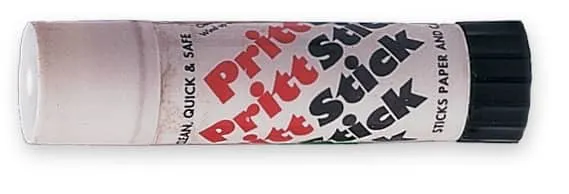

A WORKING SPACE
It is a fact that cartoons can be drawn in just about any place you care to think of, but if possible, do try and get yourself a set area or room in which you can work without too many distractions such as pets, children, and loud music (unless you happen to work well in such an environment).
A coffee table is usually good enough to start with, or if all else fails then you can set up shop on your lap! As you acquire more and more pens and paper and other cartooning equipment you will find yourself needing more space in which to work successfully so plan ahead and mark your territory from the start! Your own cartoon-dedicated work space will become absolutely essential and will help you to get in the right frame of mind for producing cartoon work whenever you are there.
Wherever you decide to set up your working cartoon space try and have some shelves nearby for all the books and files you will inevitably acquire. It is also very convenient to have a storage area for your paper since there is nothing worse than constantly having to stop and find some paper from elsewhere just when you are in the middle of a creative flow! A filing cabinet for storing in logical order all of your finished cartoons is also a great asset.
Many possibilities
Where you work will depend on where you feel happiest and most at ease. You may only feel happy in a large space overlooking a captivating view. But perhaps this would give you agoraphobia and you may prefer the bustle of a kitchen table. If working at home disagrees with you, try renting space in a graphic d...
Table of contents
- Cover
- Title Page
- Contents
- Introduction
- What is a cartoonist?
- Chapter 1 Tools and materials
- Chapter 2 Starting to draw
- Chapter 3 Types of cartoon
- Chapter 4 Going professional
- Chapter 5 Expressions file
- Glossary
- Resources
- Index
- Credits
- Copyright